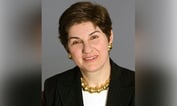As the the end of the year nears, MFS Investment Management looked back on 2014 and looked forward to 2015 – and the debatable question of when the Federal Reserve will choose to raise interest rates.
“We believe the economy is in a condition that will allow the Fed to begin moving from this zero-interest rate policy environment, and that’s what we expect them to do,” said Bill Adams, director of fixed income and portfolio manager at MFS, during a media briefing Tuesday afternoon in New York. He added, “They have the window of opportunity to do this now without upsetting the long end of the curve.”
MFS joins others’ speculation that the Fed will move to raise rates in the summer. Wall Street’s biggest banks also believe the Federal Reserve will raise interest rates by June, according to a Reuters poll. Meanwhile, just last week, Voya Investment Management experts predicted “a first-quarter 2016 tightening, earliest December 2015” during a media briefing.
“We believe the Fed will and should move in June,” Adams said. Adding, “We believe the economy is in a condition that will allow the Fed to begin moving from this zero-interest rate policy environment and that’s what we expect them to do.”
Adams looked at what he described as the “three core measures” that the Fed typically has under consideration when it begins an interest rate cycle.
These measures are wage growth, as reflected by average hourly earnings; core CPI, the consumer price index excluding energy and food prices; and the unemployment rate.
Currently, data shows wages at 2.2%, core CPI at 1.7% and unemployment at 5.8%.
Adams then compared these figures to the beginning of three previous Fed hiking cycles — in 1994, 1999 and 2004.








 November 19, 2014 at 09:42 AM
November 19, 2014 at 09:42 AM










